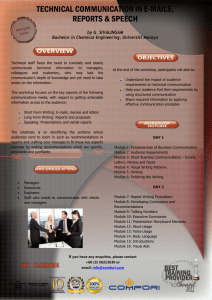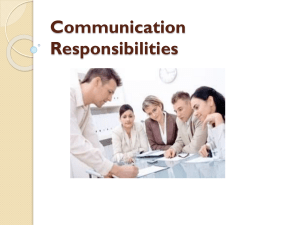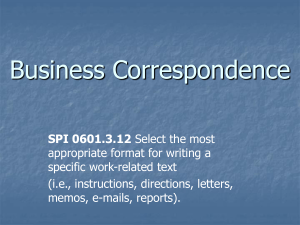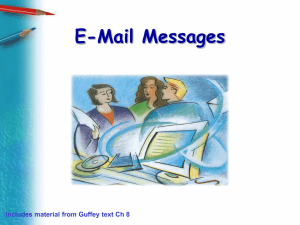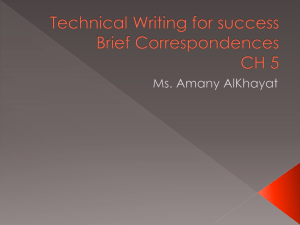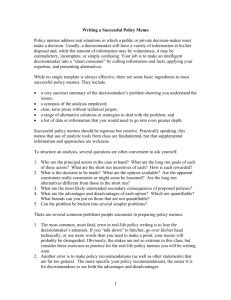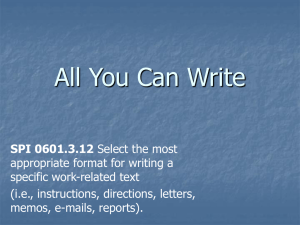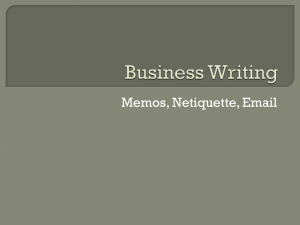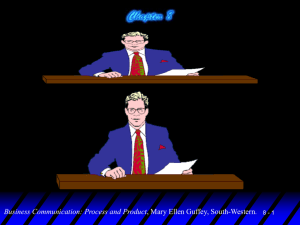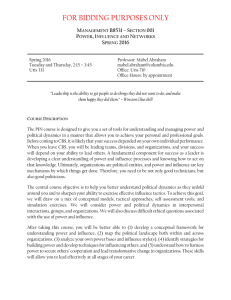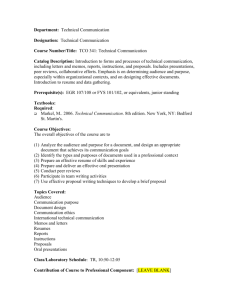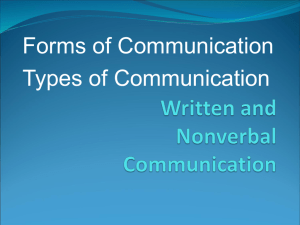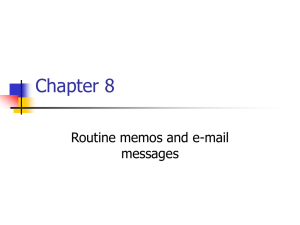Letters and Memos
advertisement
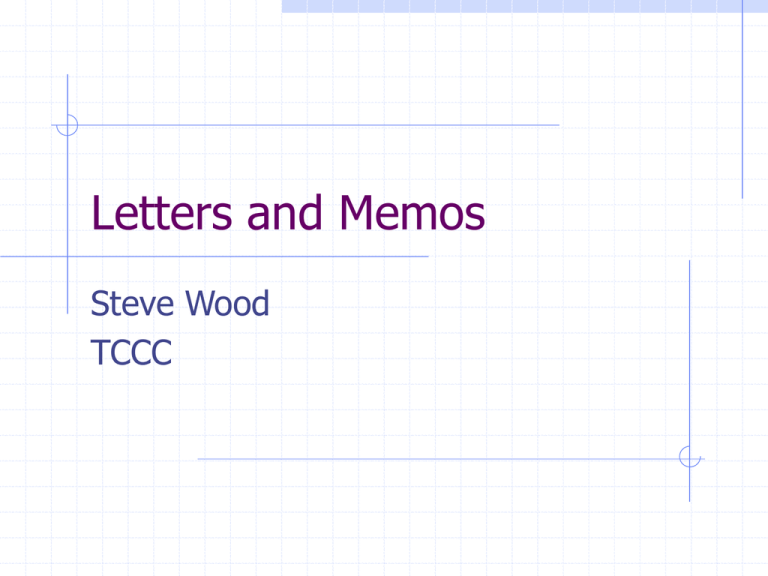
Letters and Memos Steve Wood TCCC Formal vs. Informal Reports Professional reports are divided into two categories. Formal reports are reports with a specified organization; they include items such as: Title page Table of Contents Executive Summary or Abstract Distinct chapters or sections Works Cited or Sources page Formal vs. Informal Reports Most professional reports, however, are informal reports. Informal reports take one of two forms: letters and memos (including e-mail). The vast majority of communication that goes on internally (within an organization) or externally (between organizations, or between organizations and individuals) takes the form of a letter, memo, or e-mail. Effective Letters Clear content – Since you won’t be present when a letter is read to clarify any potential misunderstanding AND since business letters are written to accomplish a specific purpose (often involving money), the message conveyed by the letter must be clear. Effective Letters A Tone of Goodwill – Effective communication doesn’t just carry a message; it also enhances or maintains the relationship between the sender and receiver. By analyzing the audience and using the “you” view, a writer can accomplish both. Effective Letters Correct Form – The world of business is often conservative and traditional and, as such, expects letters to follow the traditional formats. Most word-processing programs have letter templates or letter wizards to guide you through the formatting. Effective Memos and E-mails To, From, Date, Subject Headings – Since they are usually internal documents, memos condense the details of a letter down to the four essential elements: To: From: Date: Subject: Effective Memos and E-mails Single topic – Good memos only deal with a single subject. The second or third subjects discussed in a memo or e-mail often get lost. If you have more than one subject, send more than one memo. Effective Memos and E-mails Conversational Tone – Because they are internal, a more conversational tone can be used in a memo or e-mail. Be careful, though; e-mails are easily sent, and difficult to take back. People will often say things in a e-mail that they would not say face-to-face. Effective Memos and E-mails Conciseness – Memos and e-mail do not need a lot of filler, background, or goodwill efforts; they should focus on the message. Effective Memos and E-mails Graphic highlighting – Use techniques like bulleted or numbered lists and bolding to highlight information. Be careful with e-mail; sometimes formatting is lost in the transmission of a message because the receiving program will not recognize it. Smart E-Mail Practices Get the address right. Avoid misleading subject lines. Be concise. Don’t send anything you wouldn’t want published. Don’t use e-mail to avoid contact. Never respond when you’re angry. Guffey, Business Communication, 3rd ed. Smart E-Mail Practices Care about correctness. Resist humor and tongue-in-cheek comments. Limit any tendency to send blanket copies. Use design to improve readability of longer messages. Guffey, Business Communication, 3rd ed. Smart E-Mail Practices Consider cultural differences. Double-check before hitting the Send button. Protect against e-mail break ins. Don’t CC someone a message just to make the original recipient pay more attention. Guffey, Business Communication, 3rd ed.
